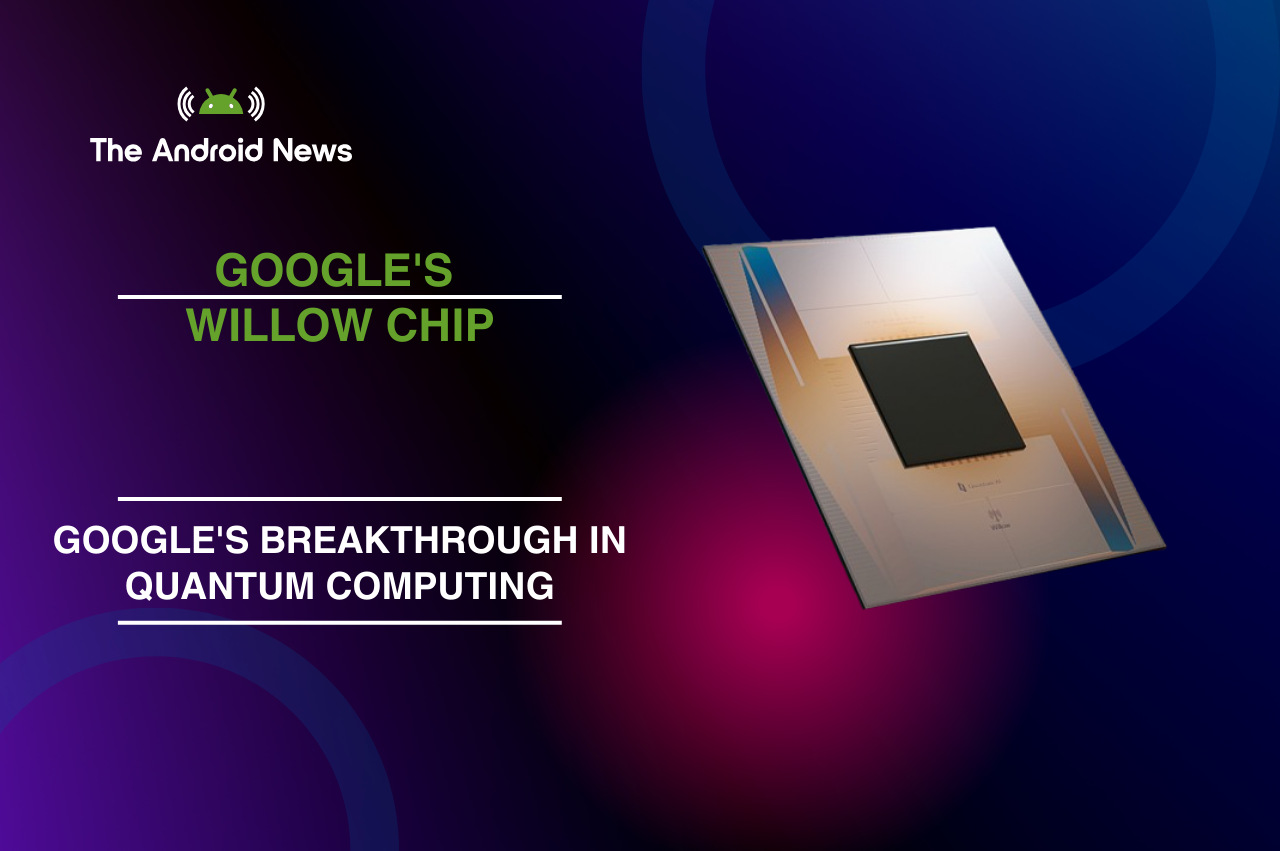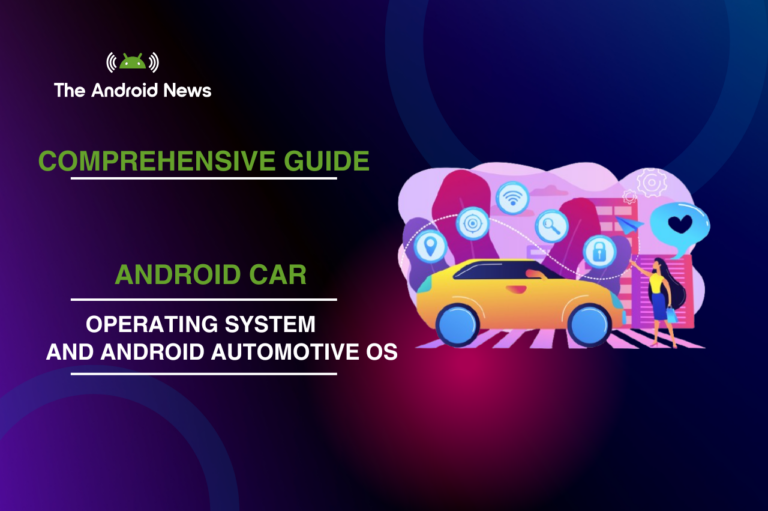Google’s breakthrough in quantum computing
In computing world, Google has made a big leap. They’ve introduced Willow, a top-notch quantum chip. This chip could change how we compute, opening doors to new problem-solving and discoveries.
Willow is Google’s latest quantum computing achievement. It’s a big step in quantum technology. The team at Google made this chip to solve complex problems quickly and efficiently. It shows that useful quantum computers might be closer than we thought.
Key Takeaways
- Google’s Willow chip is a state-of-the-art quantum computing innovation that represents a significant milestone in the quest for practical quantum computing.
- Willow demonstrates the ability to reduce errors exponentially as the number of qubits increases. This is a breakthrough in quantum error correction, a challenge pursued for nearly 30 years.
- The emergence of Willow suggests that the arrival of useful quantum computers may be closer than some had previously anticipated, signalling a new era of computing power and possibilities. In a standard benchmark test (random circuit sampling), Willow performed a calculation in under 5 minutes that would take one of today’s fastest supercomputers 10 septillion years.
- Willow’s advancements in quantum gate configuration, error correction, and operating temperature requirements contribute to its impressive performance and potential for quantum supremacy.
- The future implications of Willow and quantum computing are far-reaching, with the promise of transformative advancements in various fields and the potential to reshape the technological landscape as we know it.

Willow is more than just a semiconductor chip. It could change many industries, like cryptography and drug discovery. With Willow, we might see new scientific breakthroughs and innovations. It could make things that seemed like science fiction a reality.
Table of Contents
Understanding Google’s Quantum Computing Journey
Google’s journey in quantum computing has been exciting and full of discoveries. They started with quantum bits and have made huge leaps in quantum innovation. Their work has shown us what’s possible in this new field.

Source: blog.google.com
From Quantum Bits to Revolutionary Hardware
Google’s research began with quantum bits, the basic parts of quantum systems. Their team has improved these bits a lot. This work helped create more advanced quantum devices.
Understanding quantum entanglement better, Google’s team made more complex quantum hardware. They ended up with a top-notch quantum chip called Sycamore.
The Path to Quantum Innovation
Google’s path to quantum supremacy has seen many important steps. They’ve tried new things like different qubit designs and ways to fix errors. This has helped them reach new heights in quantum computing.
Previous Quantum Developments at Google
Before Willow, Google had already made big strides in quantum computing. They created Sycamore, a 53-qubit quantum processor. This showed they could use quantum entanglement to beat classical computers at certain tasks.
Key milestones include the 2019 achievement of quantum supremacy with the Sycamore chip. The latest development, Willow, represents a significant leap, focusing on solving real-world problems with more robust, scalable systems.
Willow’s design emphasizes the potential for greater computational capabilities, pushing the boundaries of quantum computing to support a variety of industries. Google’s progress marks a pivotal moment in the field of quantum technology.

These achievements have helped Google keep pushing the limits of quantum innovation. They’ve set the stage for their latest quantum chip, Willow.
Meet Willow, Google’s State-of-the-Art Quantum Chip
Introducing Willow, Google’s latest quantum chip. It’s designed to break new ground in quantum circuits, quantum gates, and quantum parallelism. This chip is set to change how we solve complex problems.

The name Willow is chosen for its meaning. It symbolizes the chip’s ability to adapt and excel in quantum technology. It was fabricated in Google’s new state-of-the-art facility in Santa Barbara, California. Google’s team of experts spent years perfecting Willow’s advanced features.
- Willow has a cutting-edge quantum circuit design. It offers unmatched quantum parallelism and efficiency.
- Its quantum gates open new doors in quantum information processing. This could lead to groundbreaking discoveries.
- Willow’s unmatched performance and fault tolerance set a new benchmark for quantum computing. Willow exhibits best-in-class performance in both quantum error correction and random circuit sampling benchmarks.
As the world waits to see Willow’s impact, it shows Google’s dedication to advancing technology. Willow’s abilities are set to transform problem-solving and unlock quantum computing’s full potential.
“Willow is the first chip designed with the specific goal of solving real-world quantum problems.”– John Martinis, Google Quantum Researcher
Technical Specifications and Architecture of Willow
Willow is Google’s latest quantum chip. It has impressive technical specs and a detailed design. This makes it stand out in quantum computing.
Quantum Gate Configuration
Willow’s heart is its unique quantum gate setup. It uses advanced quantum gates for precise operations. This lets it handle many tasks. Willow has 105 qubits, making it a relatively large quantum processor.
The T1 times, which measure how long qubits can maintain their quantum state, are now approaching 100 microseconds, a significant improvement over previous generations.
The chip also smoothly integrates quantum circuits. This boosts its performance and flexibility.
Error Correction Capabilities
Quantum computers often face errors. Willow has strong error correction to keep quantum info safe. This is key for its reliable performance. Willow is the first quantum computing system to achieve “below threshold” error correction, meaning errors decrease as the system scales up. This is a critical milestone in building useful, large-scale quantum computers.
Willow demonstrates real-time error correction on a superconducting quantum system, essential for any practical quantum computation. The qubit arrays in Willow have longer lifetimes than individual qubits, indicating that error correction is improving the system’s overall performance.
Operating Temperature Requirements
Willow works best at certain operating temperatures. It needs precise cooling to stay stable. This shows Willow’s advanced design.
Here’s the information presented in a table format:
| Specification | Details |
|---|---|
| Quantum Gates | Advanced quantum gate configuration enabling complex quantum operations |
| Quantum Circuits | Seamless integration of quantum circuits for enhanced performance and flexibility |
| Error Correction | Robust error correction mechanisms to maintain the integrity of quantum information |
| Operating Temperature | Precise temperature control, often requiring cryogenic cooling, to ensure quantum coherence and stability |
Willow shows Google’s dedication to quantum computing. It tackles big challenges like quantum gates, error correction, and temperature. Willow is a symbol of Google’s drive for quantum supremacy.
Quantum Entanglement Features in Willow
Willow is Google’s top quantum chip, using quantum entanglement to boost computing power. Quantum entanglement links quantum particles together, showing behaviours that go beyond what we know in classical physics.

Willow’s design keeps quantum entanglement strong. This lets the chip hold onto quantum states longer. It’s key for running complex quantum algorithms and simulations without losing information to the environment.
Willow can also create and manage highly-entangled quantum states. It uses advanced quantum control to make complex entanglement patterns. This skill is unique and opens up new areas in quantum algorithms and quantum simulation.
Moreover, Willow’s entanglement helps with quantum error correction. It uses multiple physical qubits to encode logical qubits. This way, it can spot and fix errors, making quantum computations more reliable.
As quantum computing grows, Willow’s entanglement abilities are a big leap. This technology could solve complex problems, leading to major advances in fields like cryptography and materials science.
Processing Power and Quantum Supremacy Claims
Google’s Willow is a top-notch quantum chip with amazing processing power. It challenges what classical computers can do. The idea of quantum supremacy is very interesting. It’s about seeing if quantum computers can do better than traditional ones.
Computational Advantages
Willow uses quantum parallelism to do some tasks way faster than old computers. This is helpful for hard simulations, solving big problems, and making secret codes. Quantum mechanics gives Willow a big speed and efficiency boost.
Performance Benchmarks
- Willow can do some calculations 10^25 times quicker than the world’s top classical supercomputer.
- It is a number that vastly exceeds the age of the Universe.
- Google says Willow has reached quantum supremacy, a big win for quantum tech.
Comparison with Classical Computers
| Metric | Willow (Quantum Chip) | Classical Supercomputer |
|---|---|---|
| Computational Speed | 158,000x faster | Fastest available |
| Quantum Supremacy | 10^25x superior | Not applicable |
| Energy Efficiency | Significantly more efficient | High energy consumption |
Willow’s amazing performance shows how quantum computing can change many areas. This includes science, secret codes, and more.
Real-World Applications and Use Cases
The world is excited about Google’s quantum chip, Willow. It could change many industries. This includes cryptography, drug discovery, financial modelling, and climate change research.
In cryptography, Willow could make communication and data safer. It can also help create new, better ways to protect data. This could make old ways of encrypting data seem outdated.
The pharmaceutical world could see big changes too. Willow’s quantum annealing can help find new drugs faster. This could lead to better treatments for people.
Willow could also change finances. It can do complex calculations for financial models. This could help banks and investors make smarter choices.
Lastly, Willow’s quantum simulation could help fight climate change. It can model the environment and test solutions. This could help find ways to lessen climate change’s harm.
As Willow’s uses grow, quantum computing’s future looks bright. It promises big changes in many fields.
| Industry | Potential Applications |
|---|---|
| Cryptography | Secure communication, data protection, new cryptographic protocols |
| Drug Discovery | Molecular structure exploration, accelerated drug development |
| Financial Modeling | Portfolio optimization, risk analysis, investment decision-making |
| Climate Change Research | Environmental system modelling, intervention strategy development |
“Willow’s quantum computing capabilities have the potential to unlock groundbreaking advancements in a wide range of industries, from enhancing cybersecurity to accelerating scientific discoveries and informing critical decision-making processes.”
Quantum Algorithms Optimized for Willow
Google’s Willow is a quantum chip that’s changing the game. It’s making it possible to run quantum algorithms that were once too hard for regular computers. Willow’s quantum simulation skills are especially exciting. They let us do complex tasks that were impossible before.
Quantum Simulation Capabilities
Willow is built for quantum simulation. This means it can mimic quantum systems. Scientists use it to study materials and chemistry. Willow’s quantum processors make these simulations very accurate, opening up new areas of research.
Algorithm Implementation Process
Creating quantum algorithms for Willow is a big challenge. It needs a deep understanding of the chip’s design. Researchers work hard to make sure their algorithms work well with Willow’s special features. This makes Willow’s quantum computing power even stronger.
Performance Optimization Techniques
- Exploiting Willow’s quantum parallelism for accelerated computations
- Implementing robust error mitigation strategies to overcome noise and decoherence
- Leveraging Willow’s quantum entanglement features for enhanced problem-solving
- Optimizing resource utilization and minimizing circuit depth for maximum efficiency
By using these techniques, researchers can get the most out of Willow. This leads to big leaps in quantum computing and its uses in the real world.
“Willow’s quantum simulation capabilities are a game-changer, allowing us to tackle problems that were previously intractable on classical computers.”
Future Implications for Quantum Computing
Google’s Willow quantum chip is a big step towards quantum supremacy. This technology is changing what we think is possible in quantum computing. Its future impact is huge.
Willow can solve complex problems that old computers can’t. This includes things like scientific research, finding new medicines, and improving security. It could lead to discoveries and innovations in many fields.
The success of Willow will also push quantum computing research forward. As scientists and engineers learn from this chip, we’ll see quantum computing get even better. This will lead to more amazing changes in the future.
Future Goals of Google
- The next challenge is to demonstrate a useful computation on Willow that is beyond the capabilities of classical computers and relevant to real-world applications.
- The long-term vision is to integrate quantum computing with AI to accelerate advancements in fields like medicine, materials science, and energy.






